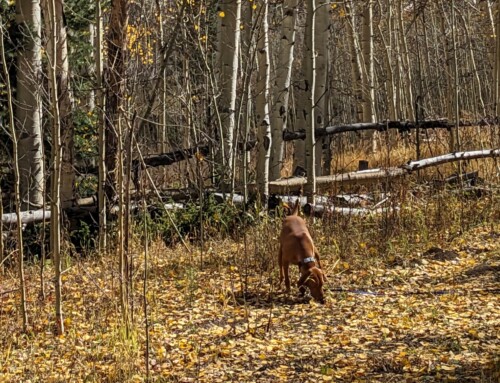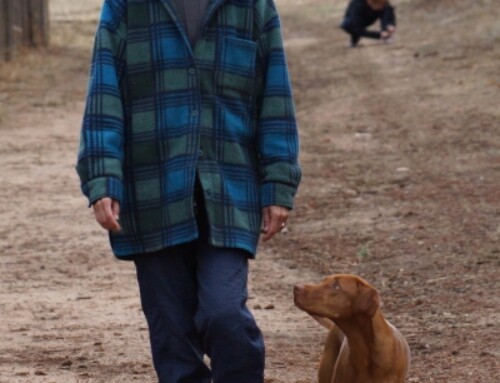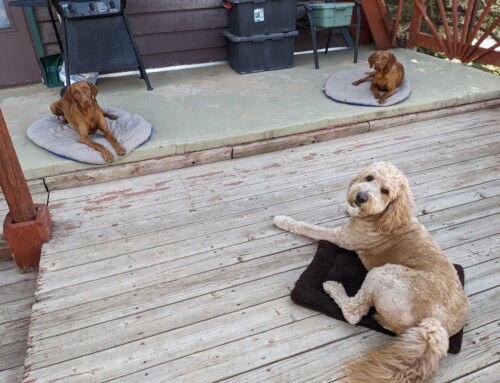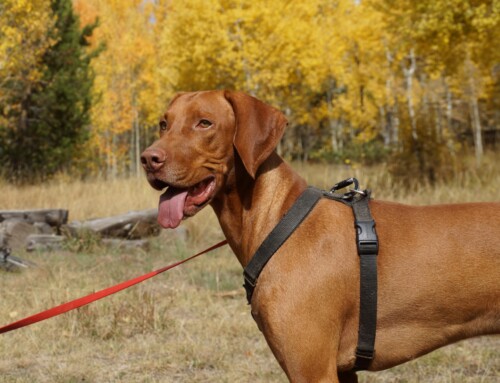DOG TRAINING OFFERED IN-PERSON AND ONLINEOur dog training services are delivered in almost any format that meets your needs. We have GROUP CLASSES at our indoor and outdoor facilities on our farm, ONLINE LIVE STREAMING classes, and SELF-PACED VIDEO-BASED training through our Online Dog Training Course. Our PRIVATE TRAININGS can be done in-home, outside, in public dog-friendly locations, at our facility on our farm, online via phone or video conferencing and through email. |
If you’ve ever tried to change or stop a bad habit, you know it’s not easy. Well-ingrained habits are difficult to change because we do them without thinking. Habits are the most effective way for our brains to conserve energy. Our dogs have many habits ingrained in their routines as well. Unfortunately, some of them we don’t like very much. Barking at the neighbor dog through the fence. Lunging and barking at other dogs on a walk. Charging the front door when the doorbell rings. Chasing the cat.
We get upset with our dogs for not stopping these annoying behaviors when we tell them to, but we often don’t realize that these have become habits for our dogs. You can’t simply stop something that has become a habit. You have to put some serious effort into changing the routine.
According to Charles Duhigg in The Power of Habit: Why We Do What We Do in Life and Business, there is a three step loop. First is the cue, which is a trigger that tells your brain to go into auto-mode and which habit to use. Second is the routine, which can be physical, mental or emotional. This is the “habit” part of the loop. Third is the reward, which encourages your brain to remember this loop in the future. Over time, your brain begins to crave that reward, and the craving is what ultimately develops such a strong, difficult-to-break habit.
Now, here’s your assignment: Determine one of your dog’s habits that you would like to change. What is the trigger that sets it off? The sound of the neighbor’s dog? The doorbell ringing? The sight of the cat? The scent of a bunny? What is the routine or habit that follows? What exactly does your dog do? What is the bad habit? Then, and this is often the difficult part, figure out what the reward is. You might not be able to determine it right away, but try to figure out what your dog gets out of this behavior/routine/habit. Is it fun? Does he get food? Does he get attention? Does he relieve boredom? Does it add some excitement to his day?
Now, use that same trigger, but begin to replace the old routine with a new routine, or habit, that will result in the same reward. Let’s say the neighbor’s dog barking through the fence triggers your dog to bark and lunge at the fence. Let’s say you’ve determined his reward is relief of his boredom and adds some excitement to his otherwise boring day. Now, when the neighbor dog barks, you race out to play ball with your dog. The trigger is the same, but the routine – barking and lunging – is replaced with a new routine of playing ball. The reward, relieving boredom and adding some excitement is the same. The only change is the routine or habit. The cue and the reward remain the same.
Here’s the second part of your assignment. More than likely, you have a habit in regard to your dog’s habit. An automatic response in your attempt to stop the behavior. What is your trigger or cue? What is your routine/habit? And what reward do you get from it? You thought this was all about changing your dog’s bad habits, but guess what? We have to change ours too!
Oh, and if you’re interested in learning more about habits and how to break them, I definitely recommend you read Duhigg’s book The Power of Habit.
Our goal is to positively impact the lives of as many dogs and their families as we can, in part through our extensive library of video, infographics and text articles. 
|












